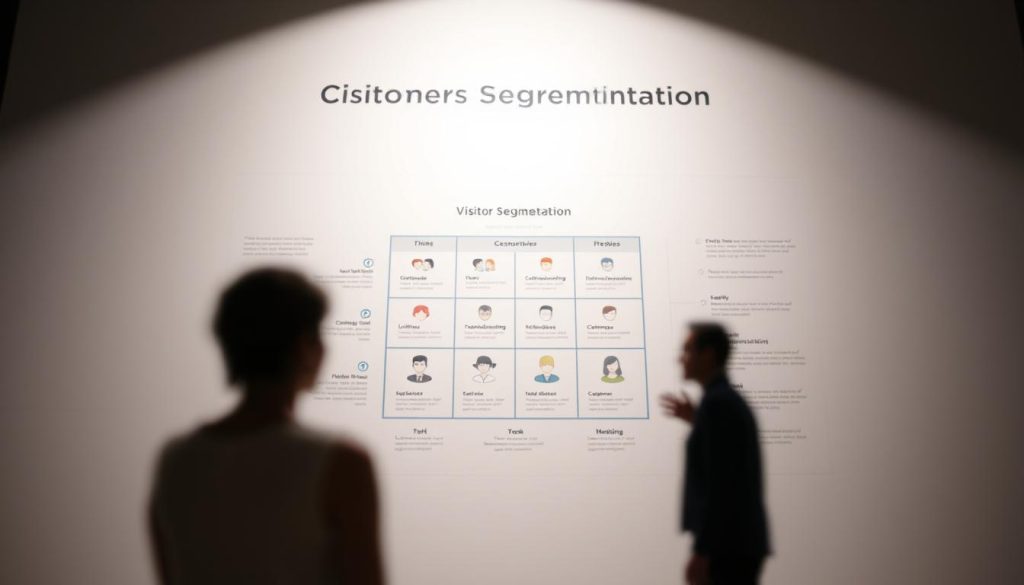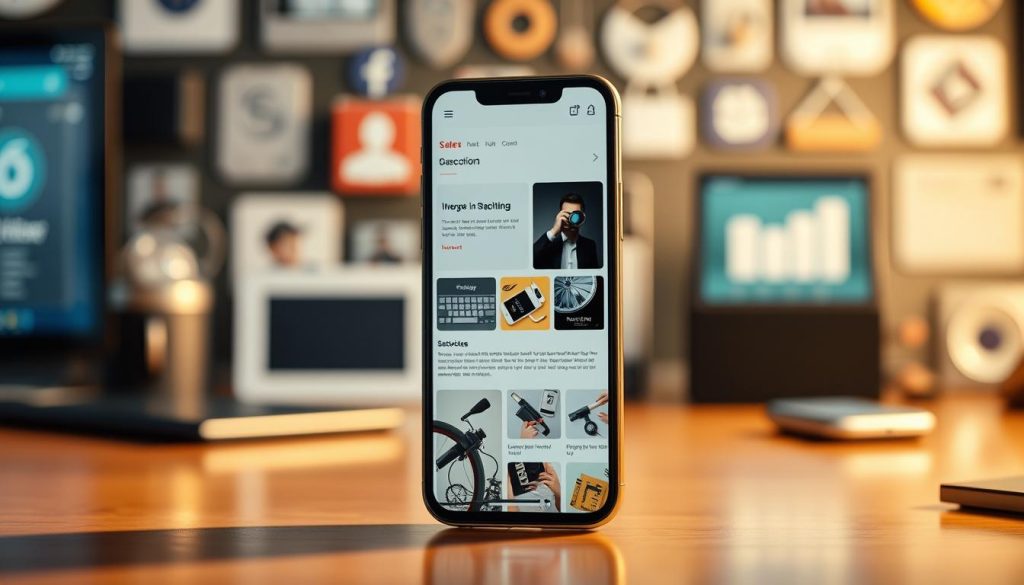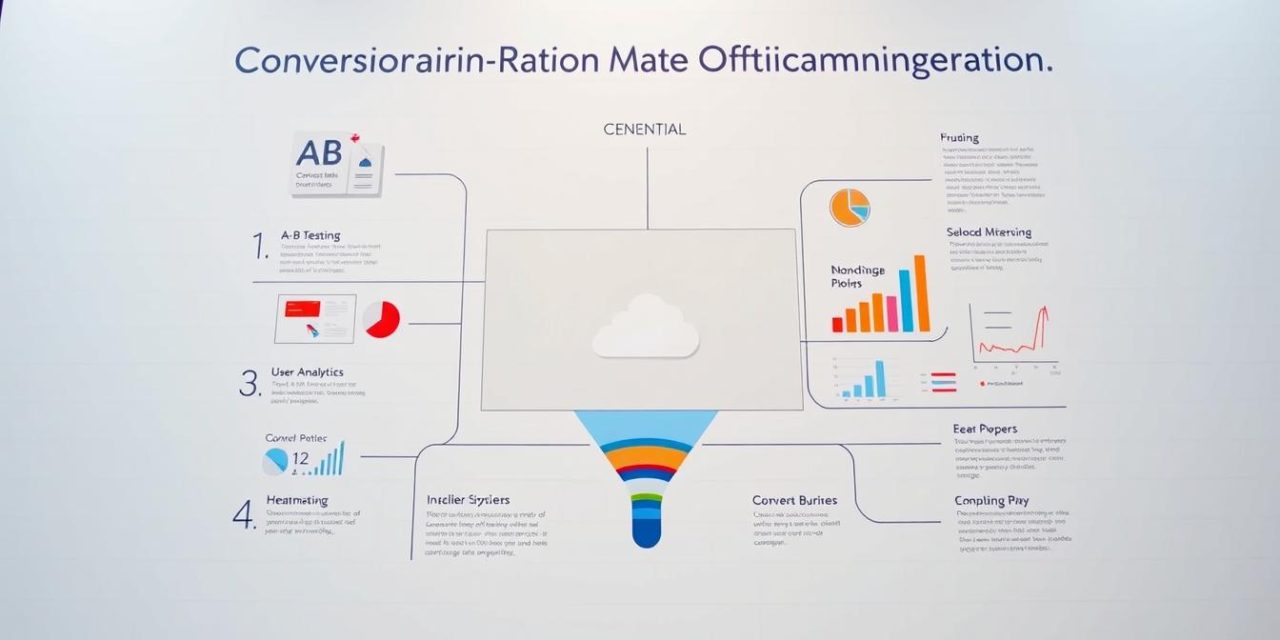Do you want more from your website traffic? Many businesses work hard to attract visitors. But they miss a huge opportunity after people arrive. This is where a powerful strategy comes into play.
Conversion rate optimization, or CRO, is the systematic process of turning more visitors into customers. It focuses on the user experience. The goal is to guide people toward a desired action. This could be making a purchase, signing up for a newsletter, or filling out a contact form.
Unlike strategies that only seek new traffic, CRO maximizes the value of your existing users. It’s about working smarter, not just spending more. This approach often delivers a better return on investment. You get more results from the audience you already have.
CRO works hand-in-hand with SEO. Search engine optimization brings people to your site. Then, conversion rate optimization ensures they take meaningful steps. You can apply these techniques across your entire website. This includes your homepage, landing pages, and blog posts.
Table of Contents
Key Takeaways
- CRO focuses on improving the percentage of website visitors who complete a desired goal.
- It maximizes the value of existing traffic rather than just chasing new visitors.
- The process involves creating a user experience that guides people toward actions.
- CRO complements SEO efforts by converting attracted traffic into customers.
- Small improvements in your conversion process can lead to significant business growth.
- This strategy can be applied to various parts of a site, like homepages and landing pages.
Introduction to Conversion Rate Optimization
In today’s digital landscape, simply attracting website visitors is no longer enough to guarantee business success. The real opportunity lies in what happens after people arrive on your site.
Conversion rate optimization represents a strategic approach to improving website performance. It focuses on increasing the percentage of users who complete meaningful actions. These actions go far beyond simple purchases.
A conversion can be any valuable user interaction. This includes form submissions, newsletter signups, content downloads, or even clicking specific links. Each represents a step toward building customer relationships.
The philosophy behind effective CRO puts people at the center. It moves beyond raw numbers to understand real human behavior. Successful strategies identify what motivates users and what barriers prevent action.
| Conversion Type | Example Actions | Business Value | Optimization Focus |
|---|---|---|---|
| Micro-Conversions | Link clicks, page views, time on site | Engagement indicators | Content relevance, navigation ease |
| Macro-Conversions | Purchases, signups, form completions | Direct business outcomes | Process simplification, trust signals |
| Secondary Actions | Social shares, reviews, referrals | Word-of-mouth marketing | Social proof, sharing incentives |
Different touchpoints throughout the customer journey offer unique optimization opportunities. A social media ad might aim for click-throughs, while a product page focuses on cart additions. Each requires tailored approaches.
This process is continuous rather than a one-time fix. It demands ongoing attention to user needs and behaviors. For comprehensive conversion rate optimization techniques, businesses must adopt a holistic strategy that prioritizes user experience above all.
The Fundamentals of CRO: Segmentation, Content, and Design
Many businesses overlook a critical opportunity: tailoring their website experience to different types of visitors. Not everyone arrives with the same purpose or readiness to act.

Visitor Segmentation for Targeted Conversions
Website visitors represent distinct groups with varying intentions. Some browse casually while others seek immediate solutions. Recognizing these differences allows for more focused efforts.
Instead of applying blanket approaches, segment your audience by behavior and intent. This strategy improves your overall performance by concentrating on high-value groups. You achieve better results with targeted attention.
Optimizing Content and Visual Design
Intelligent content adapts to user signals and preferences. Choose words that resonate emotionally with each segment. Terms like « new » or « best seller » can trigger different responses.
Visual elements significantly influence user actions. Button colors, spacing, and placement affect engagement levels. Even minor design tweaks can substantially impact your site’s effectiveness.
These three elements work together to create a comprehensive effective conversion strategy. Segmentation informs both content and design decisions. The combination delivers personalized experiences that drive meaningful actions.
Optimizing Your Website’s Conversion Funnel
Every click, scroll, and interaction on your website tells a story about your visitors’ experience and intentions. The conversion funnel represents this journey from initial interest to final action.
Identifying Drop-Off Points with Analytics
Web analytics tools provide crucial insights into your funnel performance. They track how visitors move through different pages on your site. This reveals specific drop-off points where people leave before completing goals.
Behavioral tools like heatmaps show exactly where users click and scroll. Session recordings capture real visitor interactions. These tools help you understand why friction occurs at certain funnel stages.
| Analytics Tool Type | Primary Function | Key Insights Provided |
|---|---|---|
| Funnel Analysis | Track visitor progression | Identifies high-exit pages and steps |
| Heatmap Tools | Visualize user interactions | Shows click patterns and engagement areas |
| Session Recordings | Capture real user behavior | Reveals navigation struggles and confusion points |
Improving Navigation & User Experience
Effective navigation guides visitors smoothly through your conversion funnel. Simple menu structures and clear pathways reduce abandonment. Search functionality becomes essential for sites with extensive content.
Ask critical questions about your site’s organization. Is information easy to find? Do menus lead logically to important pages? Addressing these drop-off points improves overall user experience and funnel effectiveness.
User-Centric Strategies for Enhanced Conversions
The most effective digital strategies begin with a deep understanding of what drives human decision-making. This approach moves beyond surface-level metrics to explore the psychological factors influencing your website visitors.

Successful optimization requires focusing on three key elements: what brings people to your site, what prevents action, and what ultimately persuades them. This drivers-barriers-hooks framework provides a comprehensive view of the user journey.
Understanding User Behavior and Drivers
User behavior analysis starts with identifying what motivates your potential customers. Traffic attribution surveys help capture both online and offline referral sources. Creating detailed user personas based on real data reveals underlying motivations.
Voice of Customer surveys strategically placed throughout the experience gather direct feedback at critical moments. These tools uncover emotional and psychological factors that quantitative data often misses.
Behavior analytics like heatmaps show exactly how users interact with your pages. Session replays reveal real-time struggles that cause frustration. This qualitative research identifies invisible barriers that statistics cannot capture.
Interviewing existing customers about their decision process uncovers effective persuasion hooks. Learning what nearly prevented their action provides valuable insights for improvement. This ongoing dialogue creates a truly user-centric approach.
Leveraging Conversion Rate Optimization in A/B Testing
Moving beyond intuition-based changes requires a structured approach to validating website improvements through controlled experiments. This systematic method transforms guesswork into evidence-driven decisions that consistently deliver better results.
Creating Data-Driven Hypotheses
Effective a/b testing begins with well-formed hypotheses based on user behavior insights. These predictions should clearly state what change you expect and why it will improve performance.
Combine quantitative data with qualitative feedback to build strong hypotheses. Analytics show what users do, while surveys reveal why they behave certain ways. This combination creates powerful, testable predictions.
Implementing and Analyzing A/B Tests
When running a/b testing campaigns, ensure sufficient traffic for statistical significance. Small sample sizes can produce misleading results that don’t reflect true user preferences.
Analyze both the « what » and « why » behind test outcomes. Quantitative metrics reveal performance differences between variants. Qualitative insights explain the underlying user psychology driving those results.
| Test Element | Common Variants | Potential Impact | Testing Priority |
|---|---|---|---|
| Button Design | Color, text, size, placement | High click-through improvement | High |
| Page Layout | Content order, spacing, sections | Medium engagement boost | Medium |
| Headline Copy | Length, tone, value proposition | High attention capture | High |
| Form Fields | Number, labels, required fields | High completion rate increase | High |
Testing multiple variants helps identify which changes resonate most with your audience. Even subtle adjustments can produce significant improvements in user engagement and desired actions.
Best Practices to Boost Your Conversion Rates
The search for universal formulas often leads businesses down the wrong optimization path. What succeeded for others may not work for your unique audience.

Common recommendations like bright button colors or urgency tactics are not guaranteed solutions. These approaches represent past successes rather than current certainties.
Blindly applying industry standards limits growth potential. The most reliable strategy involves deep customer understanding.
The best practice is having no fixed practices beyond relentless customer focus.
Effective programs balance general knowledge with specific insights. Use common tactics as hypothesis starters rather than final answers.
| Approach | Focus | Result Consistency | Long-term Value |
|---|---|---|---|
| Generic Best Practices | Industry standards | Variable | Limited |
| Customer-Centric Strategy | Specific user needs | High | Sustainable |
| Product Reviews Implementation | Social proof | 3-37% improvement | Context-dependent |
Product reviews demonstrate how results vary. They can increase desired actions by 3% to 37% based on implementation.
Build an iterative mindset focused on continuous learning. Test improvements based on actual user behaviors rather than prescriptive formulas.
This customer-obsessed approach consistently outperforms generic implementations. It addresses specific needs and motivations of your actual audience.
CRO Strategies for Ecommerce and Digital Marketing
Product pages and checkout flows represent critical conversion points for online retailers. These elements directly influence whether visitors become paying customers.
High-quality visual assets compensate for the inability to physically interact with items. 360-degree views and demonstration videos provide comprehensive product understanding. These elements build confidence during the shopping experience.
Optimizing Product Pages and Checkout Flow
Product descriptions must balance detail with clarity. They should highlight key features without overwhelming readers. Effective copy addresses construction, fit, and unique selling points.
Brand voice establishes trust through familiar, relatable tones. Customer reviews and trust badges reduce purchase anxiety. Return policies with few restrictions encourage trial purchases.
The checkout process demands special attention. Mobile shoppers abandon carts at alarming rates. Streamlined flows with multiple payment options improve completion rates.
One-click purchasing and autofill functionality speed up transactions. Abandoned cart emails recover potentially lost sales. These messages can include discounts or free shipping incentives.
Mobile Optimization and Responsive Design for CRO
Mobile devices now dominate internet usage patterns, requiring websites to adapt their design and functionality accordingly. Over 58% of global web traffic originates from smartphones and tablets, making mobile-friendly design essential rather than optional.

Every modern website should feature responsive design that automatically adjusts to different screen sizes. This foundation ensures proper display across all devices, but additional enhancements can significantly improve mobile user experience.
Key mobile optimizations include simplified navigation, larger touch-friendly buttons, and reduced text density. These adjustments accommodate smaller screens and touch-based interactions, creating a smoother browsing experience.
Website performance directly impacts user engagement and success metrics. Slow-loading sites increase bounce rates, while faster sites improve both user satisfaction and search rankings. Free tools can analyze loading speeds and identify specific bottlenecks.
For ecommerce sites with extensive media, image compression becomes crucial. Reducing file sizes without sacrificing quality dramatically improves site speed. This technical enhancement supports better overall conversion optimization efforts.
Analytics tools provide valuable insights into mobile visitor behavior. Features like screen recordings and heatmaps reveal how users interact with dynamic elements. This data helps refine mobile-specific design decisions for optimal results.
Integrating Social Proof and Compelling Calls-to-Action
Building trust and providing clear direction are essential ingredients for turning website visitors into loyal customers. These two elements work together seamlessly. Social proof builds confidence, while a strong call-to-action provides the next step.
This combination addresses both the emotional and practical sides of a user’s decision. It reassures them they are making a smart choice. Then, it shows them exactly how to proceed.
Designing Effective CTAs
A call-to-action is a clear instruction guiding users toward a desired action. The best CTAs are simple and relevant to the content. They should feel like a natural next step, not a hard sell.
Testing different placements and wording is crucial. Simple buttons with minimal text often perform best. Spreading information across the page reduces complexity for the user.
| CTA Element | Testing Focus | User Impact |
|---|---|---|
| Button Text | Action-oriented words | Clarity and motivation |
| Placement | Above the fold vs. end of content | Visibility and context |
| Color & Design | Contrast and size | Attention and clickability |
Leveraging Customer Reviews and Testimonials
Social proof shows potential customers that others have taken the desired action. This reduces perceived risk. Positive reviews can be as influential as a friend’s recommendation.
Displaying product reviews can improve outcomes significantly. Studies show increases from 3% to 37%. Influencer endorsements and media mentions also provide powerful validation.
Pop-ups and hello bars can strategically highlight this social proof. Well-designed pop-ups achieve an average success rate over 9%. They capture attention at key moments in the user journey.
Combining trust signals with clear instructions creates a powerful conversion rate optimization techniques. It guides users confidently toward becoming customers.
Conclusion
The journey toward better online results is never truly finished. Conversion rate optimization represents an ongoing cycle of testing, learning, and refining.
Dashboard tools provide essential visibility into user behavior. They help you monitor key metrics and identify areas for improvement.
The most effective approach focuses on understanding your visitors’ complete experience. Learn what attracts them, what creates friction, and what ultimately persuades action.
Small, thoughtful changes can significantly increase conversion performance. This user-centered philosophy creates mutual benefits for both businesses and customers.
Commit to continuous learning and systematic refinement. Your dedication to improving website success will yield sustainable growth over time.
FAQ
What is the primary goal of conversion rate optimization?
The main aim is to enhance your web page’s ability to turn visitors into customers. It focuses on improving the user experience to encourage more people to complete a desired action, like making a purchase or signing up.
How does A/B testing fit into a CRO strategy?
A/B testing is a core method for comparing two versions of a page to see which performs better. It helps you make data-driven decisions about design and content changes to increase conversions effectively.
Why is understanding the conversion funnel important?
Analyzing the funnel helps you see where potential customers drop off. Identifying these points allows you to improve website navigation and fix issues, guiding users smoothly toward completing an action.
What role does mobile optimization play in boosting results?
With many users on mobile devices, a responsive design is crucial. A site that works well on phones and tablets provides a better experience, which can significantly lift your average conversion rate.
How can social proof, like testimonials, improve performance?
Customer reviews and testimonials build trust with your audience. Showcasing positive feedback can persuade new visitors to take action, making your marketing efforts more effective.
What is a common mistake to avoid in ecommerce optimization?
A frequent error is having a complicated checkout process. Simplifying the steps and reducing form fields can prevent shopping cart abandonment and help increase your website conversion rate.





